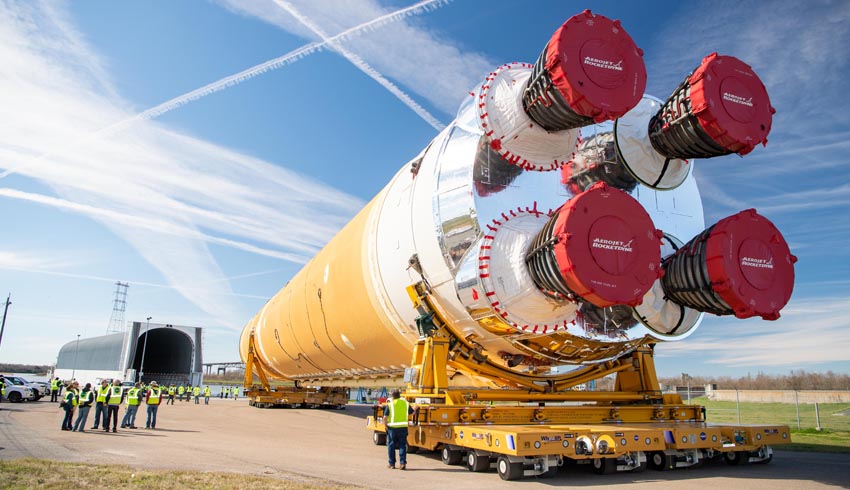Aerojet Rocketdyne is under contract to build 24 new engines, and the components being validated in this test series will be introduced in this production set. This new configuration will result in a 30 per cent cost reduction in the RS-25 engine from the version that flew on the Space Shuttle.
The Retrofit-2 test series, consisting of seven tests at NASA’s Stennis Space Center, began on 28 January and will run through June. Each hot-fire test will last up to 500 seconds on the A1 Test Stand.
Eileen Drake, Aerojet Rocketdyne CEO and president, explained, “This new hardware will significantly reduce the cost of the RS-25 rocket engine by leveraging important advances in design, materials and manufacturing technology.”
Some of the components being demonstrated in the Retrofit-2 series were featured on the previous Retrofit-1B test campaign. These include a combustion chamber built using a high-tech brazing technique called Hot Isostatic Pressing (HIP), and an additively manufactured Pogo Accumulator Assembly, a beach ball-sized component that damps out liquid oxygen system pressure oscillations.
This test series will put a second HIP-bonded main combustion chamber through a comprehensive series of tests. Aerojet Rocketdyne chose a HIP-bonded design because it eliminates difficult and time consuming plating processes, reduces welding defects and costly rework. Development and certification models of the HIP-bonded combustion chamber have been completed and six production units are being assembled at Aerojet Rocketdyne.
The Retrofit-2 series will also continue to test the same Pogo hardware that was previously tested to further verify its durability. The additively manufactured Pogo assembly has already been tested 13 times, accumulating 5,400 seconds of total firing time. The additively manufactured Pogo design eliminates more than 20 parts, more than 100 welds and reduces fabrication time by more than 50 per cent.
Retrofit-2 also will test two RS-25 high pressure fuel and oxidiser turbopumps built from simplified designs using modern techniques as well as 3D printed valves and redesigned actuators.
Aerojet Rocketdyne, a subsidiary of Aerojet Rocketdyne Holdings, is a world-recognised aerospace and defence leader that provides propulsion systems and energetics to the space, missile defence and strategic systems, and tactical systems areas, in support of domestic and international customers.

